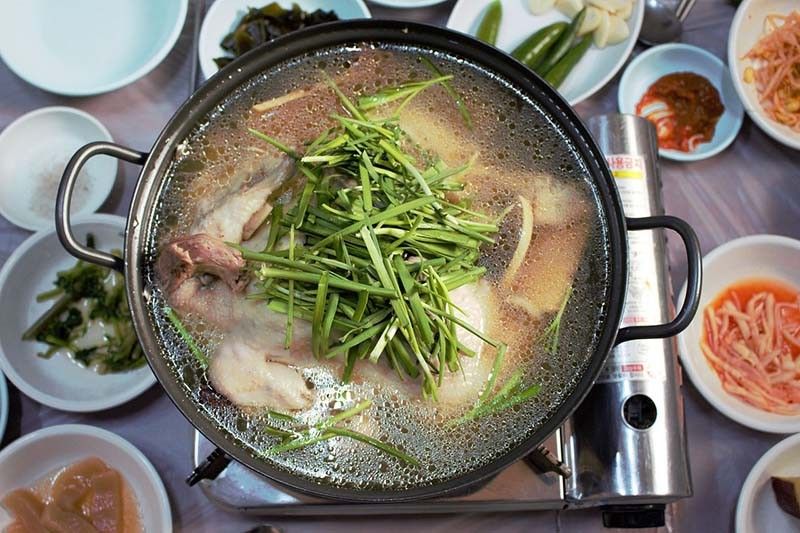Ginger chicken soup wars: South Koreans upset anew after China claims samgyetang as its own

MANILA, Philippines — After the kimchi row last year, a Chinese search engine raised the brows of some Koreans over its description of samgyetang (ginger chicken soup).
In an article published in Koreatimes.co.kr on Tuesday, it said that the Chinese search engine Baidu described samgyetang as "a chicken soup dish originating from Guangdong province in China that was later introduced to Korea".
The article quoted the Rural Development Administration, which is under South Korea's Ministry of Agriculture, Food and Rural Affairs, by clarifying the definition prescribed by the agency.
It said that Koreans have been making soup with chicken since "at least the Joseon era", a dynastic era that spanned five centuries from 1392 to 1897.
Wealthy Koreans enjoyed chicken soup with ginger powder during the country's Japanese colonial period (1910 to 1945). It later became more popular among ordinary people in the 1960s.
The Korea Times article also reported that Prof. Seo Kyung-duk of Sungshin Women's University had sent a complaint letter to Baidu regarding the matter. The professor had similarly filed a complaint over the kimchi row last year.
"Baidu has stirred up a controversy by distorting history with Samgyetang, as it did with Kimchi recently… so I immediately sent an email to Baidu saying, 'China doesn't even use the Harmonized System (HS) ? or international names and numbers designated for traded products ? for Samgyetang, while Korea classifies the food with the number, 1602.32.1010," the professor was quoted by Korea Times.
This is not the first time that the two countries were placed in the center of a controversy over the origins of their respective dishes/food.
Korean netizens lashed out at the state-run Chinese newspaper Global Times in November last year for its article on the ISO (International Organization for Standardization) certification of pao cai (pickled vegetables) commonly made in Sichuan province in China.
The paper reported that the ISO status is an “international standard for the kimchi industry led by China”.
This did not sit well with Koreans, some of which took to social media and accused the move as "stealing our culture," as one posted on the Korean portal Naver.
Kimchi is a popular side dish of salted and fermented vegetables usually seasoned with chili powder, spring onions, garlic, ginger and salted seafood.
Kimjang or the tradition of making and sharing of kimchi that usually takes place in late autumn in South Korea and kimchi-making in North Korea were inscribed on the United Nations
Educational, Scientific and Cultural Organization or UNESCO's Representative List of the Intangible Cultural Heritage of Humanity in 2013 and 2015, respectively.
Kimchi and samgyetang, among other Korean foods, have become popular all over the world due to the popularity of Korean dramas.
In the Philippines, many Korean establishments, such as samgyupsal (grilled pork belly) restaurants and Korean specialty stores are found in many urban cities.



















